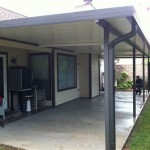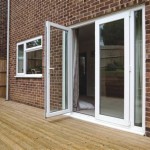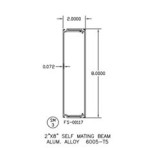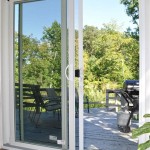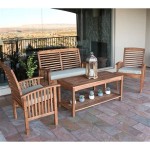Modern Patio Design: Extending Living Spaces Outdoors
Modern patio design represents a significant trend in contemporary home design. It focuses on seamlessly integrating indoor and outdoor living spaces, creating functional and aesthetically pleasing extensions of the home. These designs prioritize comfort, style, and functionality, reflecting a shift towards a more relaxed and nature-integrated lifestyle. The modern patio is not merely an afterthought; it is a carefully considered element of the overall architectural design, often acting as an outdoor living room, dining area, or even an entertainment hub.
The evolution of patio design has moved away from basic concrete slabs towards meticulously planned spaces that incorporate a variety of materials, textures, and design elements. This includes sophisticated landscaping, comfortable furniture arrangements, and integrated lighting systems. The goal is to create an outdoor environment that is as inviting and usable as the interior spaces of the house, thereby increasing the overall living area and enhancing the homeowner's quality of life.
Key Point 1: Materials and Textures in Modern Patio Design
The selection of materials is crucial in achieving a modern patio aesthetic. Contemporary designs often utilize a combination of natural and manufactured materials to create visually appealing and durable surfaces. Popular choices include concrete pavers, natural stone (such as flagstone or bluestone), wood decking (especially composite options for longevity), and porcelain tiles. Each material offers unique characteristics in terms of appearance, texture, and maintenance requirements.
Concrete pavers are available in a wide range of colors, shapes, and sizes, offering versatility in design and ease of installation. They can be arranged in various patterns to create visually interesting surfaces, and their durability makes them well-suited for high-traffic areas. Natural stone provides a more organic and textured appearance, adding a touch of elegance and sophistication to the patio. However, natural stone can be more expensive and may require more specialized installation techniques.
Wood decking, particularly when using composite materials, offers a warm and inviting feel. Composite decking is resistant to rot, decay, and insect infestation, making it a low-maintenance option for homeowners. Porcelain tiles are another durable and versatile choice, offering resistance to scratches, stains, and fading. They are available in a wide range of styles, including those that mimic the appearance of natural stone or wood, providing a sophisticated and modern look.
Beyond the hardscaping, the selection of furniture materials contributes significantly to the overall aesthetic. Powder-coated aluminum, teak, and wicker are popular choices for modern patio furniture. These materials are durable, weather-resistant, and offer a range of design possibilities. Fabrics used for cushions and upholstery should also be weather-resistant and fade-resistant to ensure longevity and maintain their aesthetic appeal. Consider fabrics like Sunbrella or other outdoor-specific textiles.
The combination of these different materials and textures creates visual interest and adds depth to the patio design. For example, a concrete paver patio can be complemented by a wood pergola or a natural stone fire pit, creating a cohesive and inviting outdoor space. The strategic use of contrasting textures, such as smooth concrete paired with rough stone, can further enhance the visual appeal of the patio.
Key Point 2: Functionality and Space Planning
Modern patio design prioritizes functionality and efficient space planning. The layout of the patio should be carefully considered to accommodate various activities, such as dining, lounging, and entertaining. This often involves dividing the patio into distinct zones, each with a specific purpose.
A dining area typically includes a table and chairs, providing a comfortable space for outdoor meals. The size of the dining area should be proportionate to the size of the patio and the number of people who will be using it. Consider the placement of the dining area in relation to the kitchen, as ease of access can greatly enhance the dining experience. An outdoor kitchen, equipped with a grill, sink, and countertop space, represents a significant upgrade for those who frequently entertain outdoors.
A lounging area provides a relaxed space for relaxation and conversation. Comfortable seating, such as sofas, armchairs, and lounge chairs, are essential elements of this zone. Consider adding a coffee table or side tables for placing drinks and snacks. The placement of the lounging area should take into account the amount of sunlight and shade, as well as the privacy of the space. A pergola or awning can provide shade during the hottest hours of the day, while strategically placed landscaping can create a sense of privacy.
An entertainment area can be incorporated into the patio design, providing a space for hosting gatherings and enjoying outdoor activities. This may include a fire pit, an outdoor television, or a built-in bar. The design of the entertainment area should be tailored to the specific needs and preferences of the homeowner. For example, a fire pit can create a cozy and inviting atmosphere for evening gatherings, while an outdoor television can provide entertainment for sports enthusiasts.
Effective space planning also involves considering the flow of traffic throughout the patio. Pathways should be wide enough to accommodate multiple people walking comfortably, and furniture should be arranged in a way that does not obstruct movement. The placement of plants and landscaping elements should also be carefully considered to enhance the overall flow and functionality of the patio.
Key Point 3: Lighting and Landscaping Integration
Lighting plays a crucial role in creating the right ambiance for a modern patio. Well-designed lighting can enhance the beauty of the patio, extend its usability into the evening hours, and improve safety and security. A combination of ambient, task, and accent lighting is often used to achieve a balanced and functional lighting scheme.
Ambient lighting provides general illumination for the patio, creating a soft and inviting atmosphere. String lights, pendant lights, and recessed lighting are popular choices for ambient lighting. Task lighting provides focused illumination for specific tasks, such as cooking or reading. Under-cabinet lighting in an outdoor kitchen and adjustable reading lamps in a lounging area are examples of task lighting. Accent lighting highlights specific features of the patio, such as plants, architectural details, or water features. Spotlights, up-lights, and path lights are commonly used for accent lighting.
The integration of landscaping is another key element of modern patio design. Plants, trees, and shrubs can soften the hard lines of the patio, create a sense of privacy, and enhance the overall aesthetic appeal. Native plants are often preferred, as they are well-suited to the local climate and require less maintenance. Consider incorporating a variety of plant textures and colors to create visual interest.
Vertical gardens are a popular trend in modern patio design, adding greenery and visual interest to vertical surfaces. These can be created using modular planters, living walls, or climbing plants. Water features, such as fountains or ponds, can also add a sense of tranquility and serenity to the patio. The sound of running water can be particularly soothing and can help to mask unwanted noise.
The strategic placement of landscaping elements can also help to define the different zones of the patio. For example, a row of shrubs can create a privacy screen around the lounging area, while a small tree can provide shade for the dining area. The integration of lighting and landscaping is essential for creating a cohesive and inviting outdoor space that can be enjoyed day and night.
In summation, modern patio design is a multifaceted approach to creating functional and aesthetically pleasing outdoor living spaces. The careful selection of materials, thoughtful space planning, and strategic integration of lighting and landscaping are all essential elements of a successful modern patio design. By prioritizing comfort, style, and functionality, homeowners can create outdoor environments that enhance their quality of life and extend the enjoyment of their homes.
:max_bytes(150000):strip_icc()/298815228_170632415484129_1384064757048194521_n-5aa965d810fe43559536e0996cea381e.jpg?strip=all)
39 Modern Backyard Ideas To Try This Summer

Modern Patio Designs For A Chic Outdoor Space

Modern Backyard Design 11 Practical Tips Best Materials

50 Best Patio Design Ideas For Outdoor And Backyard In 2025 Foyr

Swoon Worthy Patio Inspiration Ideas And Garden Design For Your Backyard Decorilla Interior

Our Backyard Patio Makeover And Tour Modern Glam

Our Favorite Outdoor Living Spaces Colorado Homes Lifestyles

Swoon Worthy Patio Inspiration Ideas And Garden Design For Your Backyard Decorilla Interior

200 Modern Patio Design Ideas 2025 Backyard Garden Landscaping House Exterior Rooftop Pergola

How To Design The Perfect Patio Dk Studio
Related Posts

